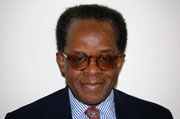
America’s true crime problem
By Lee A. Daniels, NNPA Columnist
It’s getting to be difficult to recall a week when, thanks to public exposure of videos, or tweets, text messages or emails, we’ve not seen another shocking example of police mistreatment of Black or Hispanic citizens under questionable circumstances.
Consider that, and then ponder these words about Black Americans and the criminal justice system: “There is too much crime and too little justice in the lives of Black Americans today. But while the problem of crime is widely shared in the United States, the problem of injustice is not.”
And these words which closely follow them: “It is a paradox that Black Americans, who suffer from crime disproportionately, have mixed feelings, at best, regarding its support of and confidence in the criminal justice system as it operates today.”
And, finally, these: “The only way out of this paradox is to address the problems of crime and injustice simultaneously: changing the nature of the courts, criminal punishments and law enforcement agencies and their a-gents, while honestly acknowledging the scope of the crime problem and working for peace in Black America.”
No, you won’t find those words in the agreement signed recently by the Department of Justice and the city of Cleveland requiring an extensive reform of the city’s widely-criticized police force. Actually, they were written 20 years ago by criminal justice scholar Christopher E. Stone, then head of the nonprofit Vera Institute for Justice, in the 1996 edition of the National Urban League publication, The State of Black America 1996. Stone, a founder of the Neighborhood Defender Service of Harlem, in New York City, is now president of the George Soros-funded Open Society Foundations.
But they are as relevant today as then because the use of social media has undeniably revealed that some significant segment of cops – largely White ones but also some Black and Hispanic ones, too – view Black Americans not as citizens to protect but easy marks to prey upon.
What’s also been made clear, via a growing stack of Justice Department investigations of small-and big-city police departments, is that this predatory attitude and behavior, has long been part of the “culture” of policing itself.
For example, one of the high-ranking Miami Beach, Fla. cops charged last month with exchanging 230 emails filled with racist and sexist jokes and pornography, told a local news channel last year when the emails first surface, “That was the culture back then. It was just guys emailing each other. There was a good ol’ boy mentality back then.”
What that “aw shucks” pose tried to obscure was both the vile nature of the emails and that “back then” covered the years 2010 to 2012.
Who would expect officers with these attitudes to treat citizens of color fairly? Polls have long shown that Black Americans don’t.
The Justice Department’s scathing report on the management and practices of the Cleveland police force is the latest to show that police department’s racist practices toward Blacks and Hispanics is also both a cause and effect of bad policing: of the unnecessary and excessive use of deadly force and lethal force; of retaliatory beatings and the unnecessary use of Tasers, batons and chemical sprays; of the mistreatment of people who are mentally ill; of the use of poor tactics in dangerous situations that put officers and innocent civilians at risk; and of a lack of proper training and supervision of its officers.
The findings largely repeat those of a Justice Department investigation done a decade ago during the Bush administration that let Cleveland officials off the hook with a voluntary pledge to change departmental practices.
The new agreement requires specific measures to correct the deficiencies. Most important, it mandates the creation of a 13-member community police commission to oversee the reform effort. That body will have 10 members representing a cross-section of the Cleveland community and one member each from the Cleveland Patrolmen’s Association, the Fraternal Order of Police, and the Black Shield Police Association.
Of course, the commission has much contentious work ahead of it in trying to solve the problems of the Cleveland police force. But the Justice Department’s involvement in forging the agreement, and those of other communities bedeviled by egregiously racist police practices, underscore the fact that reforming bad police departments requires the combination of federal government oversight and local government oversight and local-community oversight.
That requires that the right people be in charge of the Justice Department – which means having the right people in charge of the White House – if there’s to be any chance of solving the nation’s true crime problem: a criminal justice system built substantially on injustice, particularly racial injustice.





Be the first to comment